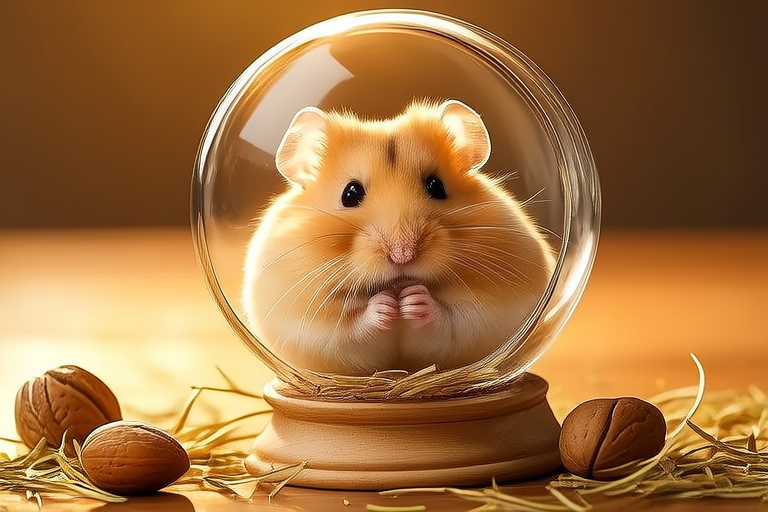Top 10 Secrets Every Golden Hamster Owner Should Know
Golden hamsters make wonderful pets, known for their cute appearance and relatively low maintenance. However, owning a golden hamster comes with its own set of responsibilities and knowledge. This guide will uncover ten secrets every golden hamster owner should know to ensure your pet leads a healthy and happy life.
Unique Care Tips
Golden hamsters have specific care needs that go beyond just feeding and cleaning. One unique tip is to provide them with a wheel that has a solid surface rather than one with rungs or wires. This prevents injuries like broken toes or legs. Additionally, hamsters need regular nail trims. While it’s best to take them to a professional groomer, you can also learn how to trim their nails at home. Use a pair of small animal nail clippers and be very careful not to cut into the quick, which contains blood vessels and nerves.
Common Myths Debunked
One common myth is that hamsters are nocturnal, meaning they sleep during the day and are active at night. In reality, they are crepuscular, most active during twilight hours. Another myth is that hamsters hibernate. While wild hamsters may enter a state of torpor when food is scarce, domesticated hamsters do not. Lastly, contrary to popular belief, hamsters do not require baths. They are clean animals and groom themselves regularly. If you notice excessive dirtiness, it might indicate an underlying health issue.
Dietary Specifics
A balanced diet is crucial for your golden hamster’s health. Their diet should consist of a mix of commercial hamster food, fresh vegetables, and occasional treats. Avoid feeding them fruits high in sugar, such as grapes and bananas, as these can cause obesity and diabetes. Instead, offer them leafy greens like spinach and kale, carrots, and broccoli. Always introduce new foods gradually to prevent digestive issues. Providing a constant supply of fresh water is essential; use a sipper bottle designed for small animals to keep the water clean and accessible.
Housing Needs
Golden hamsters need adequate space to thrive. A cage with a minimum floor area of 800 square inches is recommended. The cage should be escape-proof, with a secure lid and bars spaced closely enough to prevent the hamster from squeezing through. Aspen shavings are ideal bedding material, providing comfort and helping to control odors. Avoid cedar and pine shavings, as they can irritate the hamster’s respiratory system. Include hiding spots, tunnels, and climbing structures to mimic their natural environment and encourage exploration.
Exercise Requirements
Regular exercise is vital for maintaining your hamster’s physical and mental well-being. Besides providing a large cage, include toys and accessories that promote activity. Tunnels, exercise wheels, and climbing ropes are excellent choices. Rotate toys periodically to keep your hamster engaged. Daily playtime outside the cage can also be beneficial, but always supervise to prevent accidents. Ensure the play area is safe and free from hazards like electrical cords and small objects that could be swallowed.
Health Indicators
Monitoring your hamster’s health is key to early intervention. Look out for signs of illness such as lethargy, loss of appetite, diarrhea, or changes in behavior. Healthy hamsters are alert, active, and have shiny coats. Regularly check their teeth and claws for any abnormalities. If you notice any concerning symptoms, consult a veterinarian specializing in exotic pets. Early detection and treatment can significantly improve outcomes.
Social Behaviors
Golden hamsters are solitary creatures and typically do not live well with others. Introducing two hamsters often results in fighting, leading to serious injury or death. It’s best to keep them in separate cages unless you’re breeding them under controlled conditions. Understanding their solitary nature helps prevent stress and aggression. If you want a companion for your hamster, consider getting another small pet like a gerbil or mouse instead.
Training Techniques
While hamsters are not as trainable as dogs or cats, they can still learn simple commands and tricks. Positive reinforcement, using treats as rewards, works best. Teach your hamster to come when called by associating a specific sound or word with receiving a treat. You can also train them to use a litter box by placing it in a corner of their cage and rewarding them when they use it. Patience and consistency are key to successful training.
Environmental Safety
Maintaining a safe environment is crucial for your hamster’s health. Keep the temperature between 65°F and 75°F (18°C to 24°C) and avoid drafts. Place the cage away from direct sunlight and heat sources. Ensure all equipment is securely fastened to prevent falls. Check for any sharp edges or small parts that could pose choking hazards. Regularly inspect the cage for cleanliness and repair any damage promptly.
Enrichment Activities
To keep your hamster mentally stimulated, provide enrichment activities. Hide treats around the cage to encourage foraging. Offer different types of toys and rotate them periodically to prevent boredom. Create tunnels and obstacle courses using cardboard tubes and boxes. Interactive play sessions can also enhance bonding and provide mental stimulation. Remember, a bored hamster may exhibit destructive behaviors, so keeping them engaged is important.
By following these secrets, you’ll be well-equipped to provide the best possible care for your golden hamster. With proper attention and love, your pet will lead a long and fulfilling life. Happy hamster ownership!
